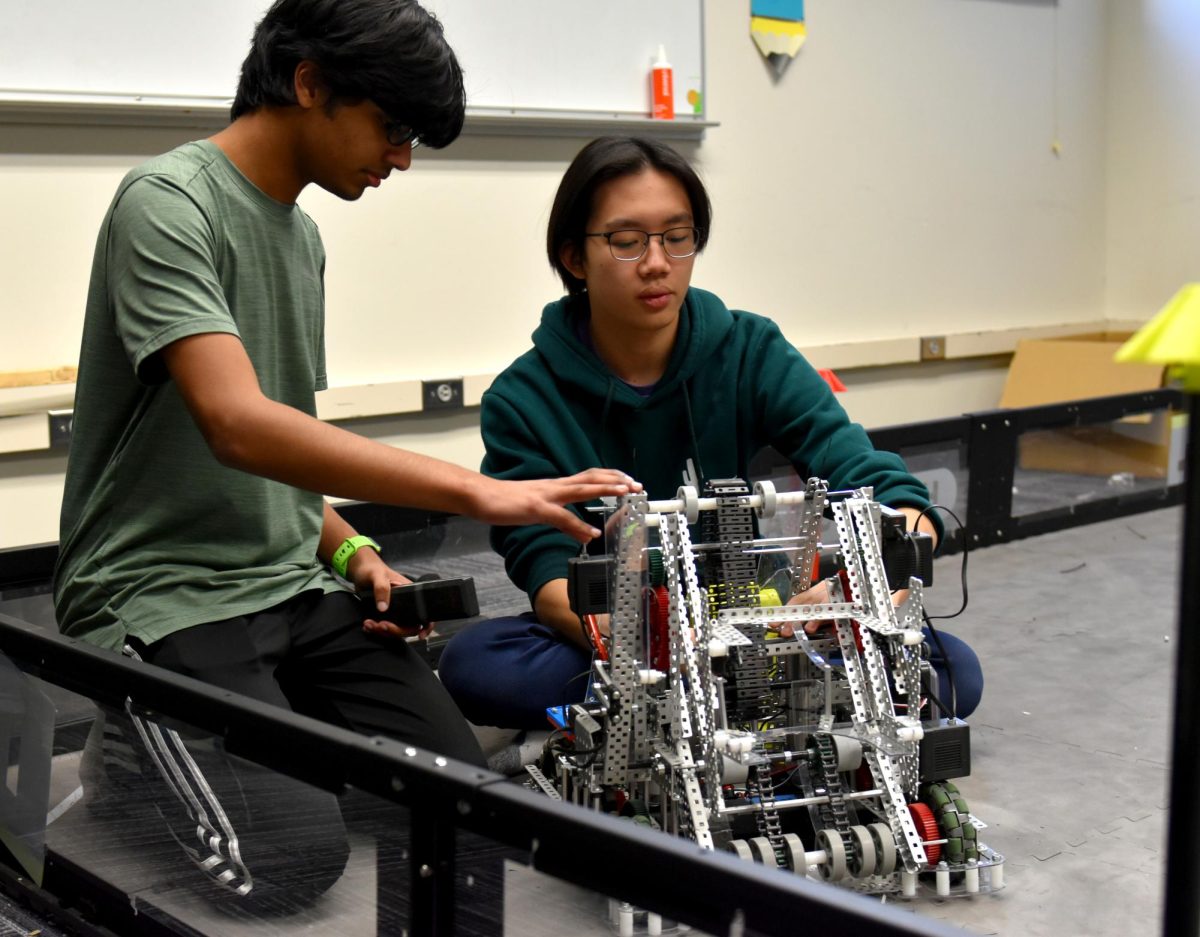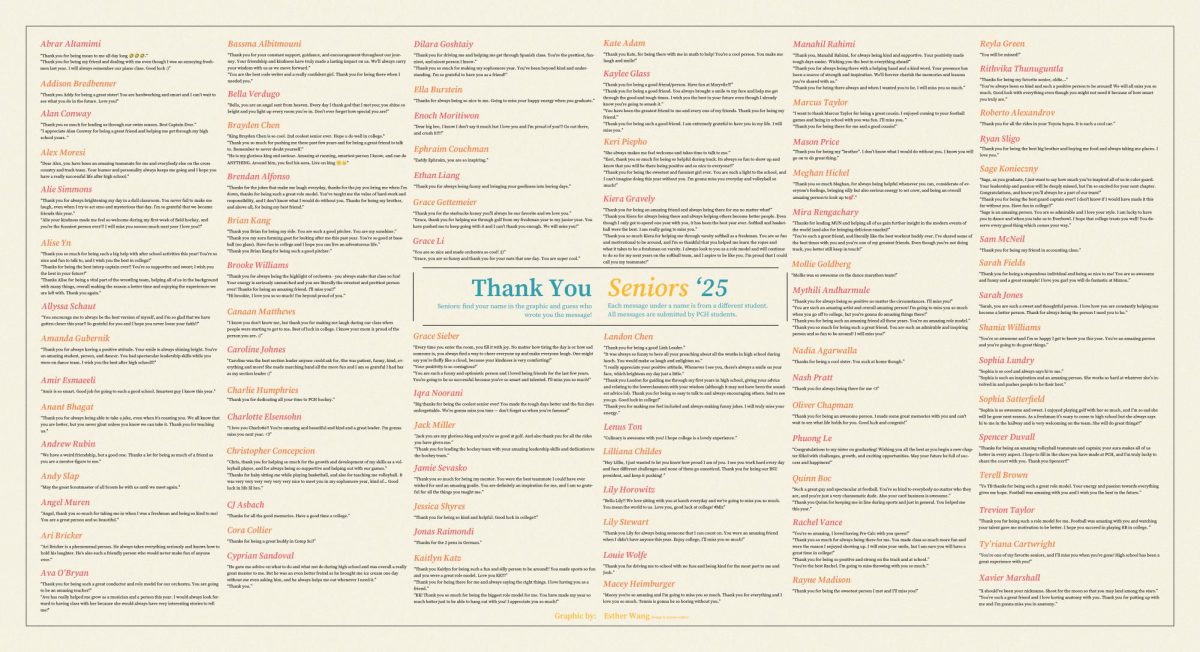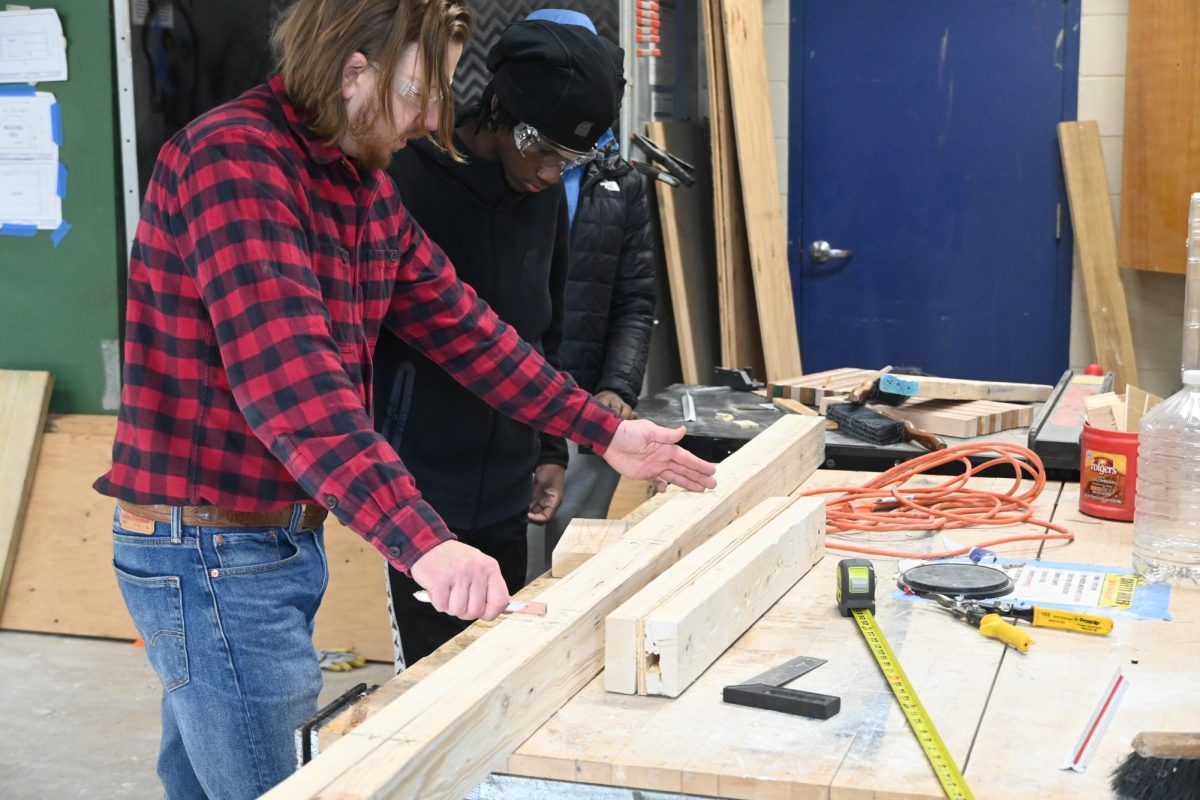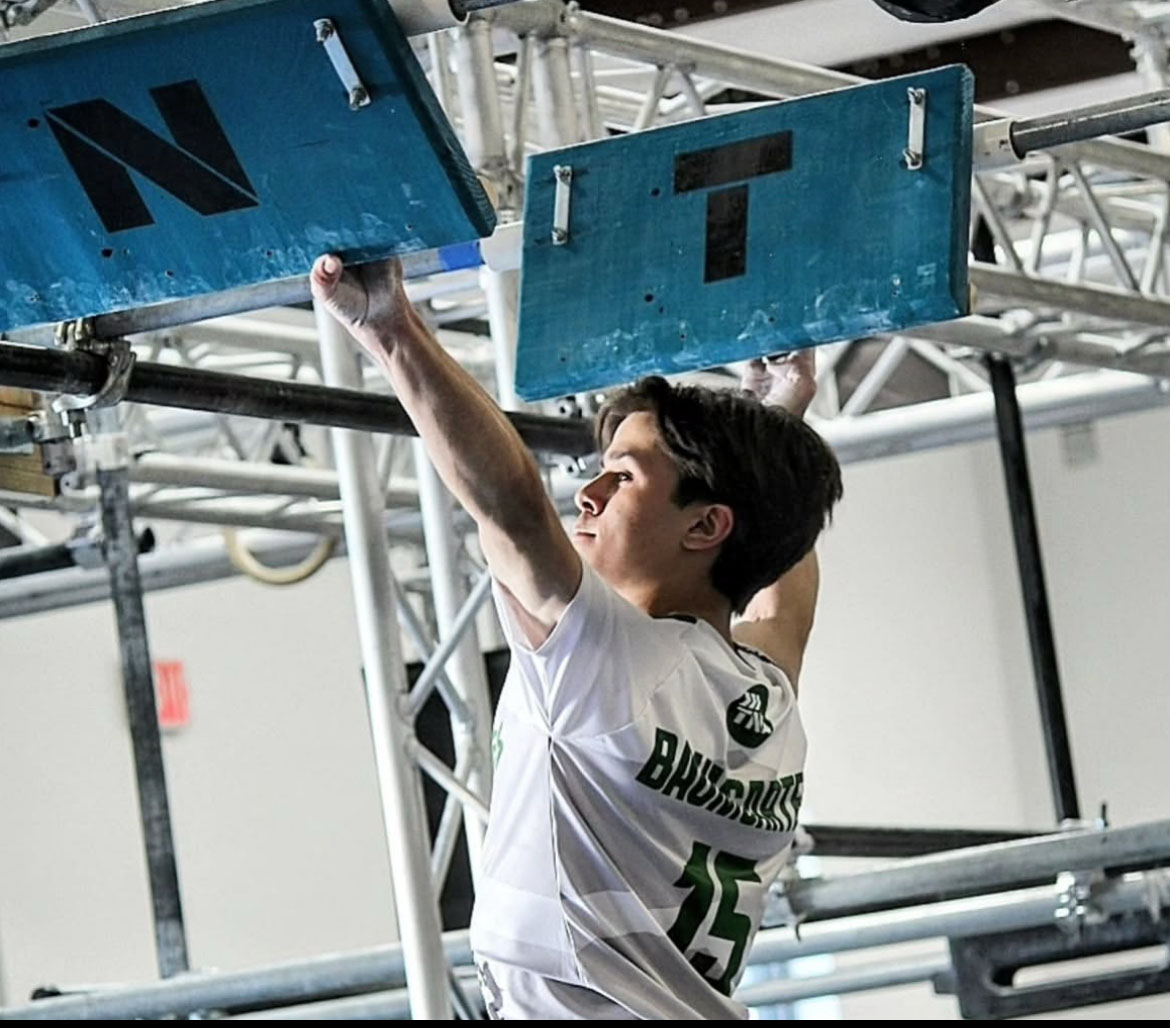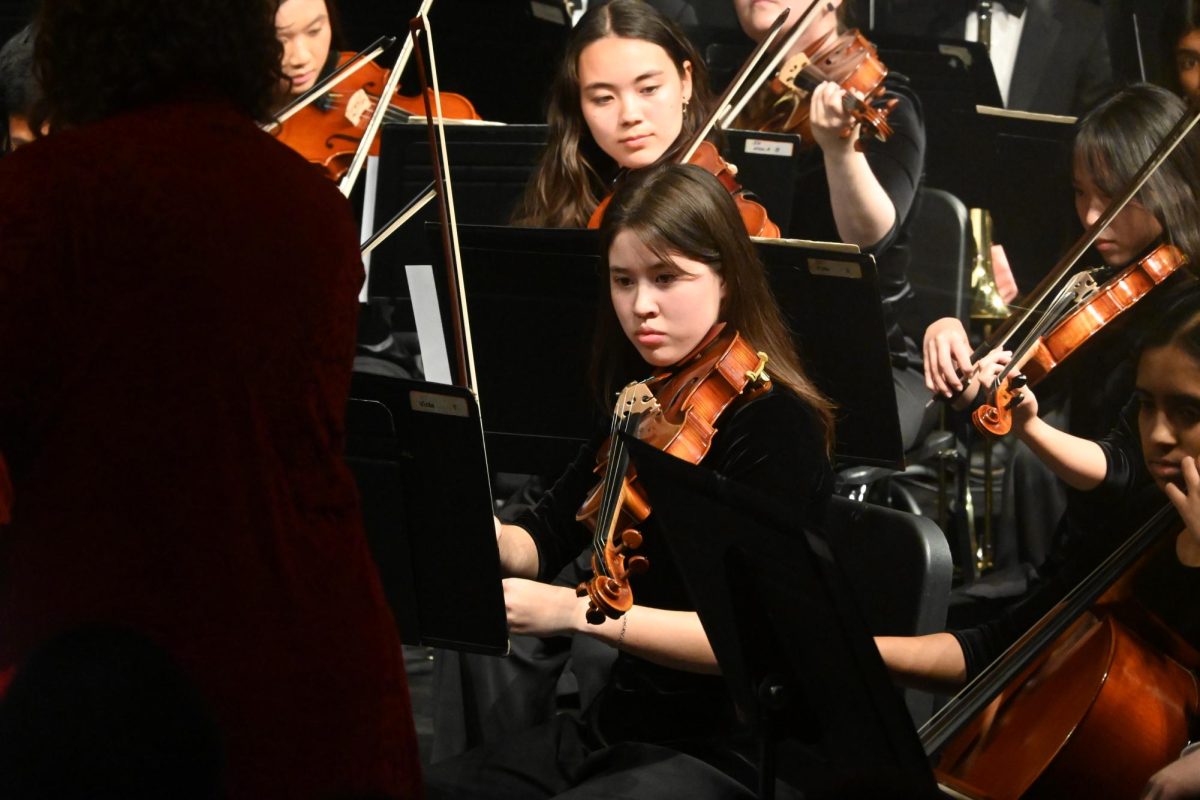In the room down the science hallway, every Tuesday and Thursday after school, much metal noises and laughter could be heard. Opening up the door, metal plates and screws scattered on the floor, while two or three robots were fighting intensely in the middle of the room. This is the robotics room: robotics teams meet to practice twice a week. On April 26, three of the five Parkway Central robotics teams competed at the state tournament.
This year, the teams tackled VEX Robotics Challenge: High Stakes. Every team will create a robot that can move and be driven on a playing field, and they score points by moving the rings in the field to stakes. The teams devoted a large amount of time to building and refining their robots. Brandon Franck, Parkway Central’s robotics sponsor, described the team this year as incredibly dedicated.
“It’s either my fourth or fifth year here, and I have not seen this dedication from the whole team. Now it’s just building a culture of everyone trying to work towards excellence,” Franck said. “They all want to win, and you get a really good program”
Throughout the season, the robotics teams competed at six regional tournaments. Both teams qualified to state through skill challenge: a competitive event where a single team tries to make the robot score as many goals as possible in two minutes. Sophomore Ethan Lau said the team is highly focused during the fast-paced, busy tournament.
“Usually we’re running around, because the matches go really quickly,” Lau said. “And then you get your robot and [run a] pit crew. We then recharge the batteries and fill up the pneumatic tanks again.”
Behind the winning robots are hours of designing and building. The teams fix and modify their robot constantly to make it more competitive. The robotics work can be divided into two main categories: building and coding. Both of which are time consuming.
“You can’t be competitive if you just show up two days a week. You have to do more work,” Franck said. “And these teams took that and ran with it, so they’re very coachable in that aspect.”
For the builders, they used VEX robotics parts and followed the PLTW design process. Sometimes they modify or cut parts to fit their design and add on to make it better
“We don’t have a design plan. So first we design the drive train, see what we need to do to make it work better,” Lau said. “And once we have a finalized drive train, we add on to it to meet the designs of the game.”
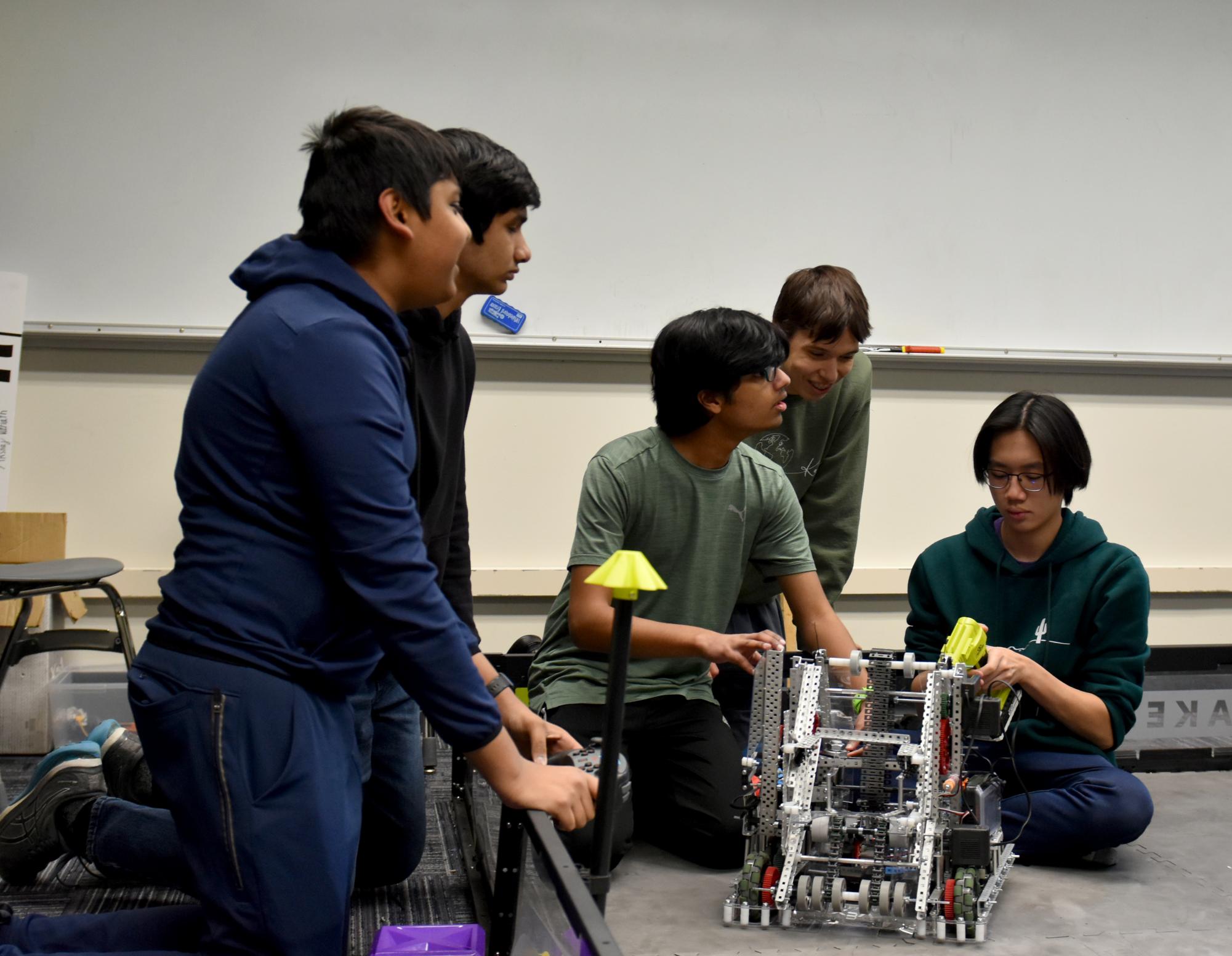
Very often the builders of the team take the robots home to work on it. Lau said they spent around two hours each day.
“I’ve built most of the robot, [and] it takes a lot of my time. I feel like the robots, like, how do I state this? It’s like my child,” Lau said.
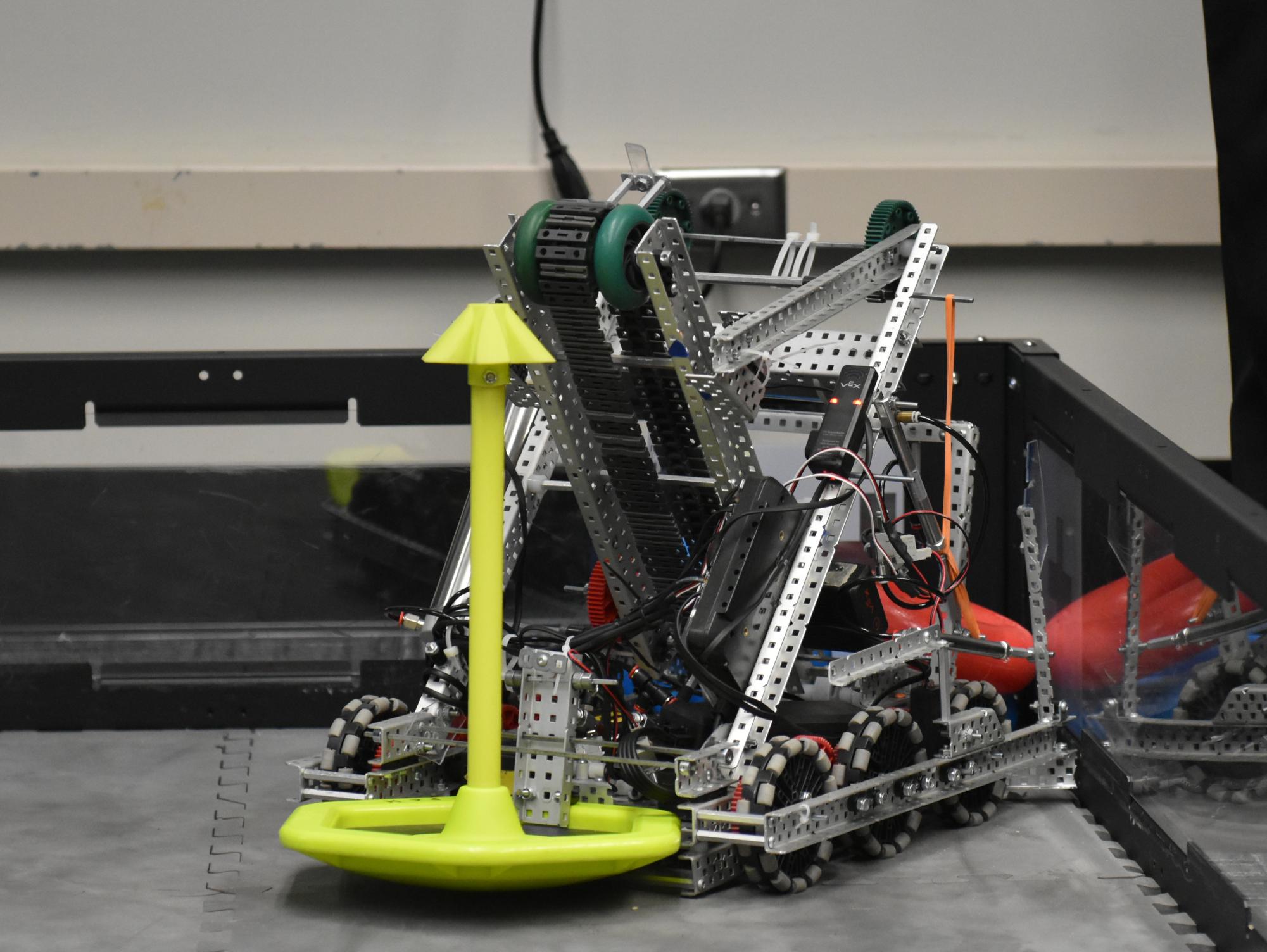
To make the robots stand out, the teams incorporated unique design in their robots. Freshman Adheesh Giritharan, one of the builders for the freshman boys’ team, looked up creative designs online and tried to integrate it into their robots.
“One of the most innovative things that we added to our robot is called a ring rush,” Giritharan said. “Basically, what we did is we added some pieces of metal that were able to freely move. It was like a one way door, and it moved forward, collected two rings and was able to disrupt the opponent’s autonomous period.”
The builders on the teams have to cooperate with the coders as well. Giritharan said he goes back and forth with the coder to modify the robots.
“Most of the time, I can take specific requests from our coder,” Giritharan said. “Let’s say our coder wants a rotation sensor to measure how far our robot moves forward. He can ask me to put a rotation sensor on our robot, so then he can code it accordingly.”
On each robot, a “brain”, or motherboard, connects all the motors and sensors. Sophomore John Lee, the main coder for the sophomore boys’ team, used C++ to code all the different mechanisms attached to the motherboard.
“Inside the VEX library, there are different kinds of operations you can do with a motor,” Lee said. “You can make a motor spin forward, backwards; [you can program it to] spin for this long, at this speed. You can get all this information and kind of use that.”
Lee explained two ways a robot can move during a game: relative movement and field adaptation. In relative movement, the programmer manually inputs movement for the robot to get the ring, which requires a new input for each game. In field adaptation, the robot adapts to the field, locates the ring and moves on its own. Lee said he has been working on increasing the precision of his team’s robot through field adaptation coding.
“In the previous competitions I’ve just used relative movement; there’s a lot of error [and] it’s not consistent,” Lee said. “Right now, I’m trying to figure out how to best make the robot adapt to the field, because then it can fix errors and correct itself when things go unexpected.”
Besides building and coding, another important part of robotics is debugging. Lee said that many times what works in theory for the robot does not work in real life, because of different factors such as friction, air resistance and overheating. Making the robot work consistently, therefore, is challenging.
“Just because it works once, that doesn’t mean it’s going to work every time,” Lee said. “For our robot, we have a clamp that hooks onto a moving stake. When it brings up the rings, it can go in [the stake] sometimes. But then the pneumatics start to lose air [and the mechanism doesn’t work anymore].”
Although Franck believed the teams are dedicated to competitive robots, none of the teams advanced from state tournament to world championship. Franck acknowledged that the state tournament became more competitive in recent years.
“Like five years ago, these robots would be almost a shoe-in for going to worlds,” Franck said. “Now there are 20 to 30 teams in the state that all are excellent.”
At the end of the robotics season, Franck is very proud of the team. He named Lau, Giritharan and sophomore Nishka Rao as three student leaders that bring the energy to the team. He believed the teams are building up a strong robotics program at school.
“The amount of work, dedication and time they put in is just amazing,” Franck said. “Not every student has that grit and the hunger to make it happen, and they’re making it happen.”
For the students, robotics gives them a community to work and connect with each other. Lau believed it benefits the participants far beyond competition.
“I just really like robotics. I really like every single aspect of it,” Lau said. “Future career wise, I want to be an engineer; I like the building, hands on stuff. It really it makes me happy,”

